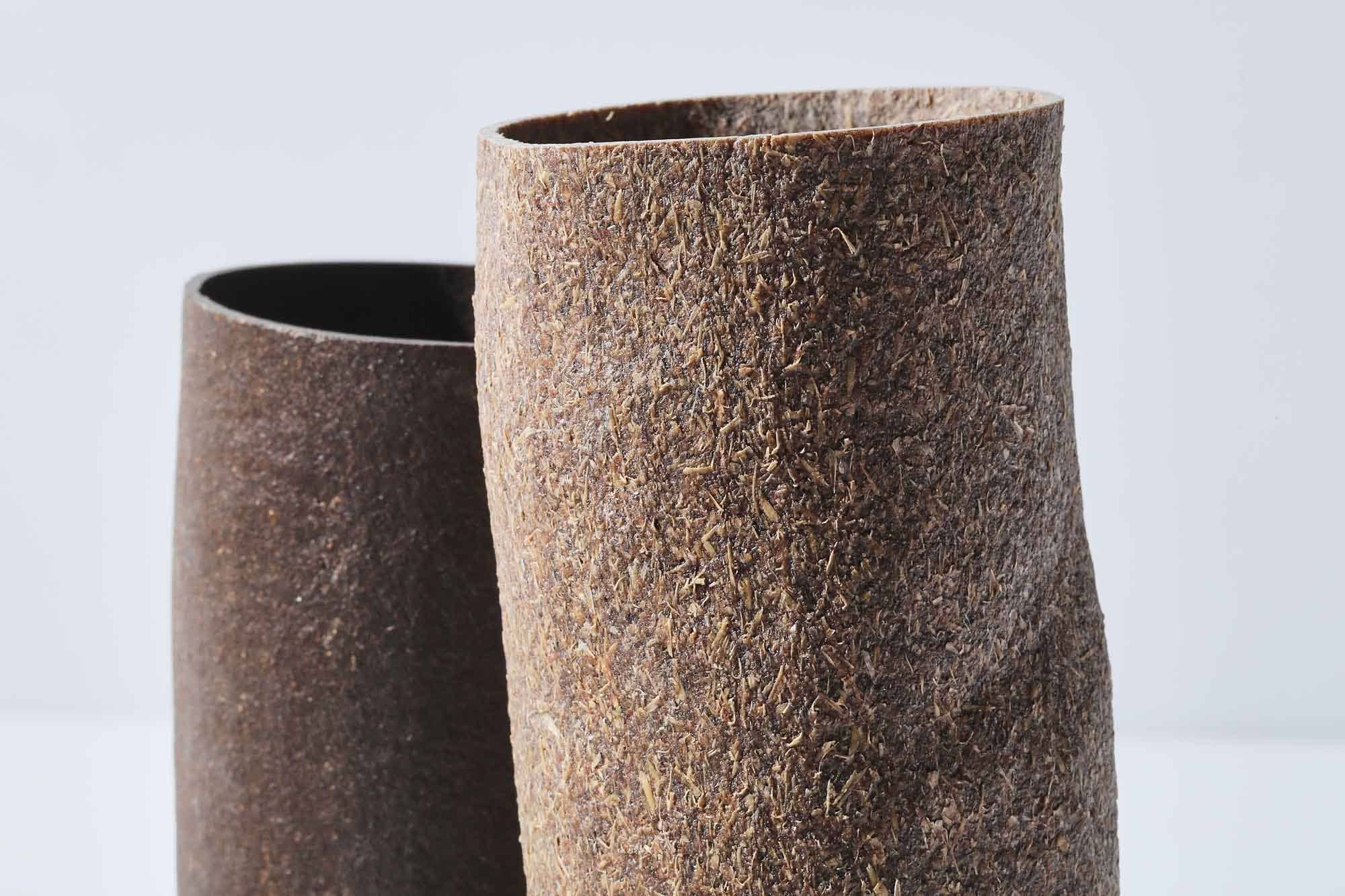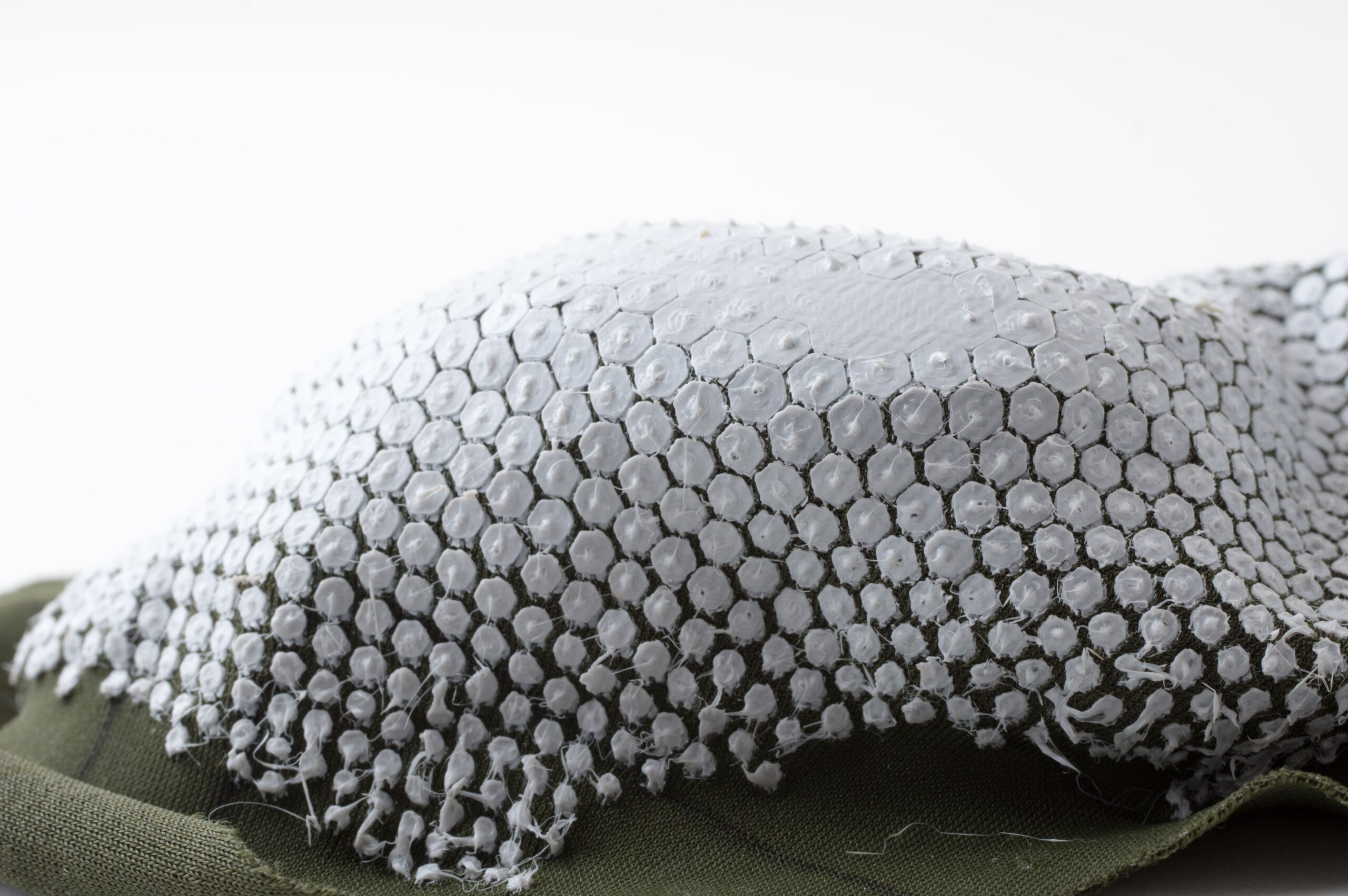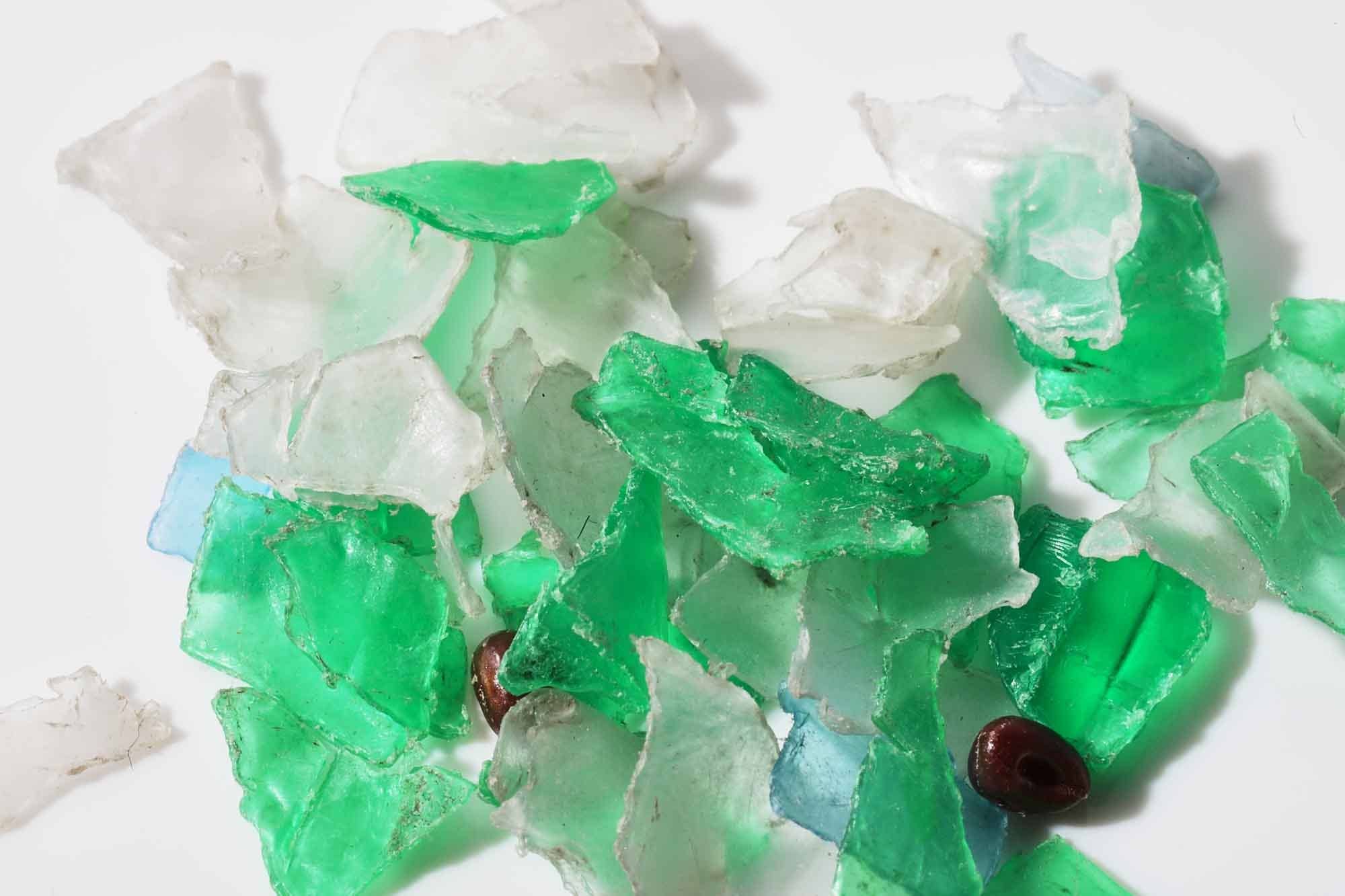
Three Materials to Protect the Ocean
Pollution, waste and acidification of the seas and oceans, are now global problems with serious consequences for the environment, marine life and human health.
To take cover, practices for collecting and recycling materials from the natural environment have been launched in recent years with the aim of safeguarding coral reefs and biodiversity.
From the Material ConneXion database, the advisory and research team at Materially, has selected three materials developed to protect and conserve marine biodiversity.
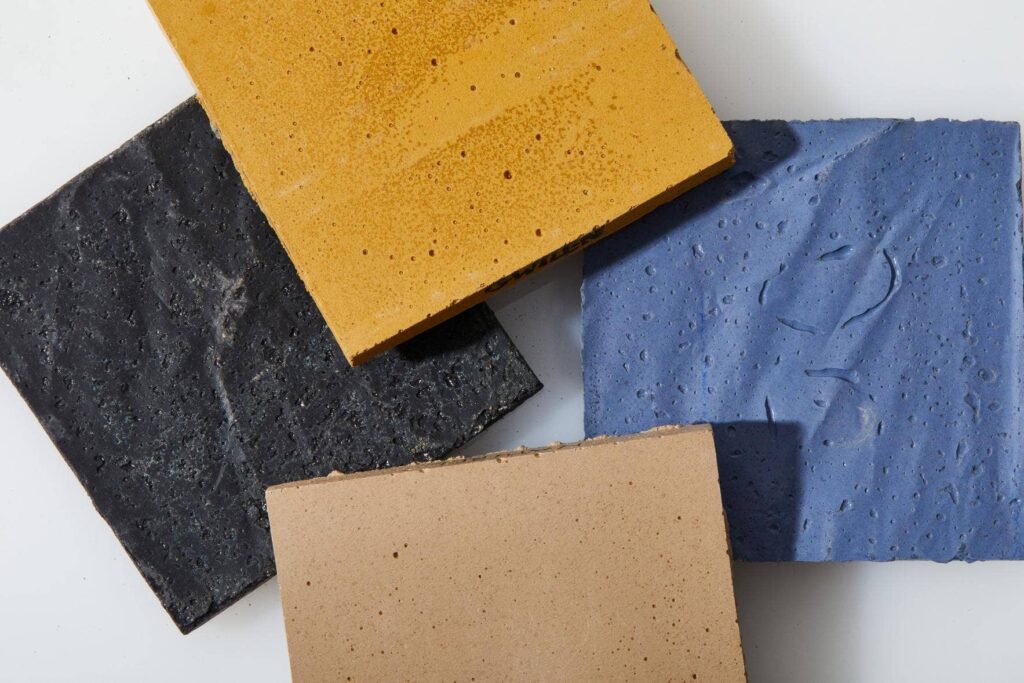
Entirely handmade, these surface covering, stand out for their texture and unique appearance, thanks to the recovery and recycling of minerals from marine and port sediments.
The material is entirely made of clay and sand, which are processed using a traditional technique that does not require firing. This natural solidification technique, inspired by diagenesis, allows materials to be obtained from marine sediments with no – cook method, contributing to low environmental impact construction. In this case, solidification occurs by moulding the material directly into the desired final shape.
The absence of high-temperature results in significant energy savings: the energy consumption required is up to 4-5 times lower than that required for cement production. The result is an extremely resistant product ideal for interior design applications.
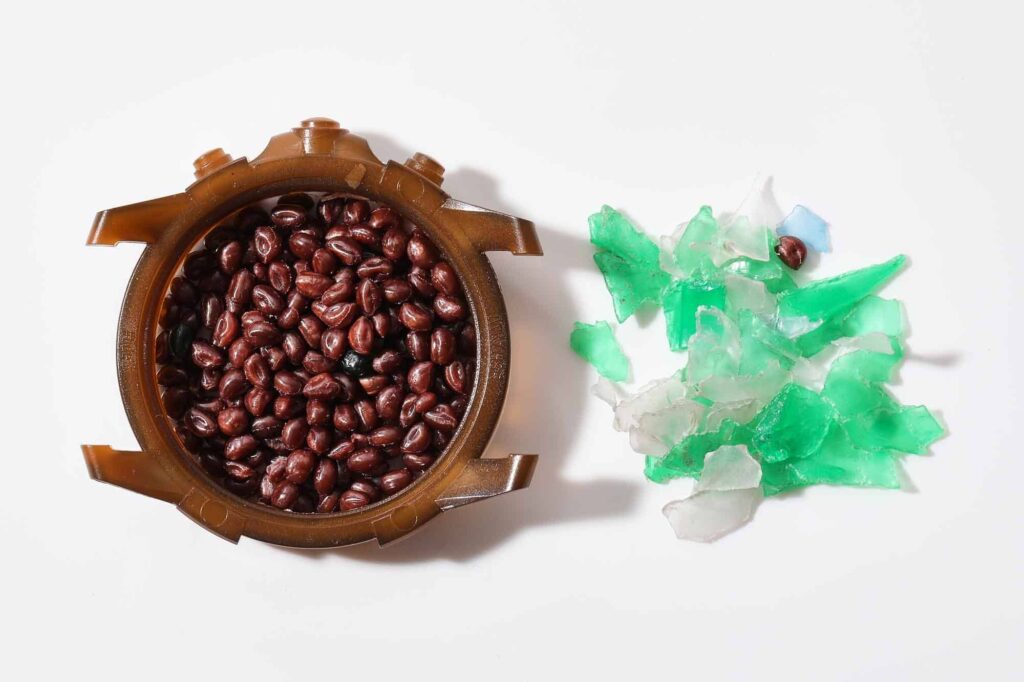
Polyester pellets (PET) can be entirely obtained from the recycling of plastic waste washed up on beaches and collected from coastlines and illegal dumps. The material was developed and tested by a Swiss company, in collaboration with the Institute for Materials Technology and Plastics Processing at the University of Applied Sciences in Rapperswil. Together with scientists, the company identified a process that regenerates plastic pellets, repairing damage caused by UV rays and salt water over time.
Usually, to ensure that performance is not compromised, many products are still made from virgin plastic, with only up to 30% of recycled material. Instead, this process makes it possible to overcome current limitations, thereby reducing dependence on virgin material. In the company’s first year of operation, more than 150 tonnes of material were processed for companies in Switzerland, North America and South Korea.
Suitable for injection moulding, the material can be used for a wide range of applications, from the automotive sector to the world of design and industrial products.
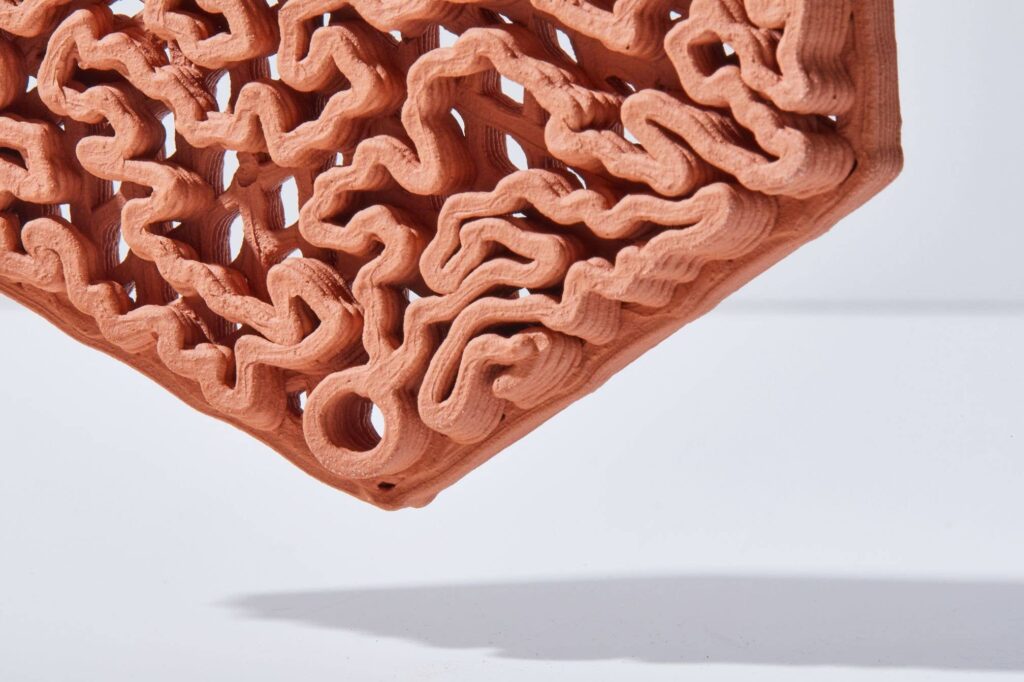
Coral reefs cover less than 1% of the ocean floor, but are home to over 25% of marine biodiversity. Due to natural and human activities, these ecosystems have undergone rapid decline worldwide in recent years, to the point that 90% of them are expected to disappear by 2050. To fight this loss, innovative products have been developed to promote the regeneration of coral reefs in the most affected areas.
Entirely made using 3D printing, these tiles are composed of 100% terracotta, a natural material that is completely compatible with the ocean environment. Usually, other similar products often use cement or metal, materials that are unsuitable and potentially harmful to marine ecosystems. In the production process, the clay is prepared by adding water to bring it to the right level of humidity, then placed in a cylinder to be printed. Once printing is complete, the tiles are finally fired in a kiln, giving them their characteristic colour. The unique shape of the tiles has been designed to accommodate and support the growth of reefs, providing ideal surfaces and cavities for the settlement of corals and other marine life.
Contact Materially to learn more about the Materials Insights subscription from Material ConneXion: thousands of contents and trend reports on innovative materials, plus access to the Materials Library, featuring a database of 10,000 cutting-edge materials you can explore for your innovation projects.
For more information, please write to info@materially.eu.

